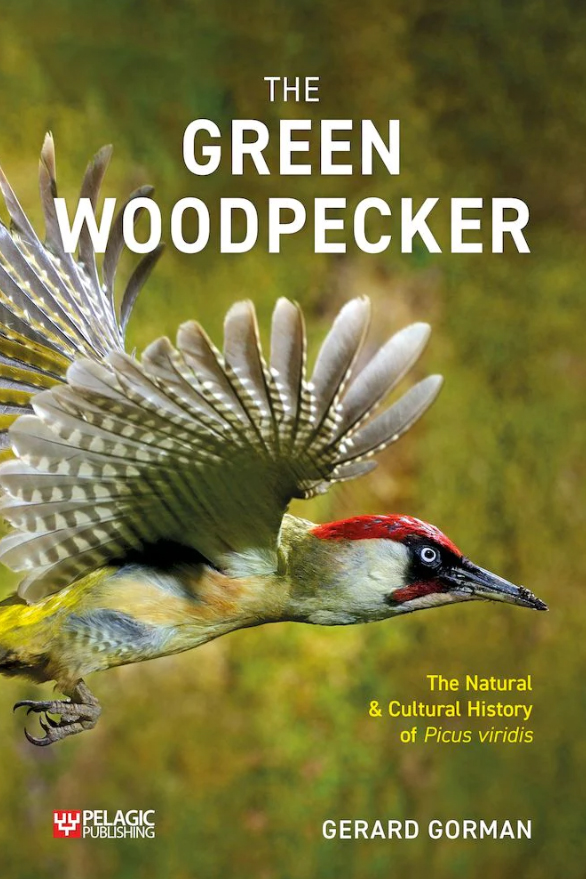The Green Woodpecker

- The Green Woodpecker by Gerard Gorman (Pelagic Publishing, 2023).
- 224 pages, 155 colour photographs and figures.
- ISBN: 9781784274368. Pbk, £24.99.
- Buy at BirdGuides bookshop from £22.99
Green Woodpeckers are spectacular birds which British birders tend to take for granted. You are likely to hear them 'yaffling' on most birding trips except perhaps in parts of Scotland and Wales – and of course in Ireland, where they do not occur at all. Normally they are only heard but if you are lucky enough to get close views you will realise what handsome birds they are. Despite living in such good numbers around us, often in our gardens, rather little is known and published about the species. This book by world woodpecker expert Gerard Gorman goes a long way to filling this gap.
There are 17 chapters covering origins, taxonomy, anatomy, appearance, moult, communications, distribution, conservation status, habitats, movements, breeding, diet, relationships with other wildlife and humans and folklore, mythology and symbolism. All are well referenced, written in a very accessible style and supported by some superb images of the birds.
A couple of chapters stand out for me. There has been much speculation as to whether Green Woodpeckers drum as part of their displays just like many of the other woodpecker species. Gorman presents spectrograms from sound recordings collected by Kyle Turner showing clearly that yes, they do drum, but not very often and not very loudly. As with other woodpecker species, drumming can be viewed as part of the complex of calls and loud tapping used to communicate.
The folklore, mythology and symbolism associated with this bird is intriguing. The history stretches back 4,000 years to Babylonia and continues to modern times. Sometimes the bird was a bringer of good fortune, sometimes bad and it was even thought to be one of the guardians of twins Romulus and Remus in ancient Rome. In many European countries it is known as the 'rainbird' and is recognised for its weather-forecasting powers.
Green Woodpecker is still widespread and numerous in the UK but its population is now in shallow decline, having increased up to about 2008. The cause of this is not known but as the chapters on breeding success and survival show, little is known about these two important parameters, both of which are likely to drive the population trend. Low survival through extreme cold winters was a known problem in the past but this can't have been an issue with the mild winters over the last decade. I hope this book stimulates greater interest and more studies of the species to understand what is going on.
Gerard Gorman has produced yet another excellent monograph on one of his chosen species. Beautifully illustrated, well written and supported by an extensive reference list this is a credit to the author and publisher.

